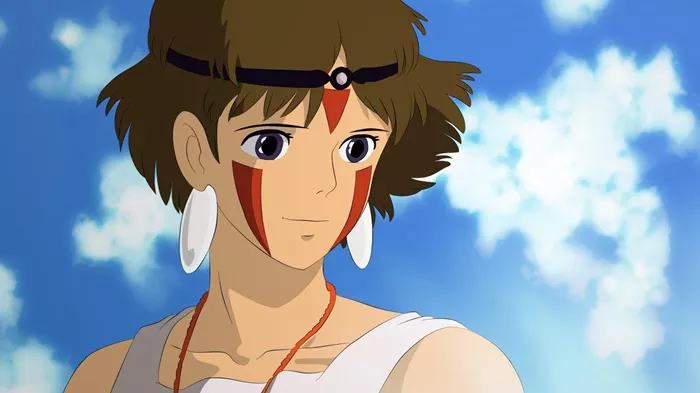Princess Mononoke,” directed by the esteemed Hayao Miyazaki and produced by Studio Ghibli, is not just an animated film but a profound narrative that explores the complex relationship between humans and nature. Central to this narrative is the character of San, also known as Princess Mononoke. San is a human raised by wolves, who harbors a deep-seated hatred for all humankind, blaming them for the destruction and suffering inflicted upon the forest and its inhabitants. This article delves into how San, through various interactions and conflicts throughout the film, gradually overcomes her hatred of humans, highlighting the transformative power of understanding and empathy.
Understanding San: The Human Raised by Wolves
San’s character is a study in contradictions. Born to humans but raised by Moro, the wolf god, San identifies herself more as a wolf than a human. Her upbringing in the wilderness, away from any human contact except for hostile encounters, shapes her worldview that humans are inherently destructive and cannot coexist with nature. This belief is reinforced continually by the ongoing destruction caused by human encroachments into the forest, led by characters like Lady Eboshi of Irontown.
The Catalyst of Change: Ashitaka’s Arrival
Ashitaka’s Role in San’s Transformation
The arrival of Ashitaka, a prince from a distant land cursed by a boar god turned demon, serves as a pivotal turning point in San’s life. Ashitaka’s quest to see with eyes unclouded by hate mirrors the potential for reconciliation between humans and nature. His impartiality and genuine respect for all life forms challenge San’s black-and-white perspective on humanity.
The Conflict with Irontown
Ashitaka’s first encounter with San occurs during one of her attempts to kill Lady Eboshi, the leader of Irontown and the symbol of human progress and environmental destruction. Ashitaka intervenes, not to fight San but to stop the cycle of violence. His actions introduce a new dimension to San’s understanding of humans; here is a human who fights not for conquest or destruction but for peace and understanding.
Growing Bonds and Shifting Perceptions
Empathy Through Shared Struggles
As the story progresses, San and Ashitaka are thrust into situations that necessitate mutual dependence. San’s initial reluctance to accept Ashitaka’s help evolves as she witnesses his consistent acts of kindness, not only towards her and the wolves but also towards his fellow humans, even those who have wronged him. This shared struggle against the forces that threaten both their worlds helps build empathy, cracking the foundation of San’s hatred.
Understanding and Respecting Differences
The key to San’s transformation is her gradual realization that not all humans are the same. This is significantly influenced by Ashitaka’s balanced view of the world, where he acknowledges the good and bad in both humans and nature. San’s interactions with Ashitaka show her that hatred is a blinding force that prevents understanding and peace.
The Resolution of Conflict
The Battle for the Forest’s Heart
The climax of the film sees San and Ashitaka fighting side by side to save the forest and its spirit from utter destruction, caused by human ignorance and greed. This alliance marks San’s full-circle journey from hating all humans to collaborating with one to save the natural world she cherishes.
San’s Final Stance on Humanity
By the end of “Princess Mononoke,” San has not completely shed her distrust and skepticism towards humans, but she has learned to differentiate between those who seek harmony with nature and those who oppose it. She chooses to continue living apart from humans but remains open to the possibilities of peace, symbolized by her ongoing relationship with Ashitaka.
Conclusion: The Journey from Hatred to Hope
San’s journey in “Princess Mononoke” is emblematic of the broader themes of the film—conflict, coexistence, and compassion. Through her interactions with Ashitaka and her observations of the complexities of human actions, San learns that hatred is a barrier to understanding and peace. Her evolution from a human hater to a cautious cooperator offers a message of hope: that even the deepest prejudices can be overcome with empathy, respect, and a willingness to see the world through others’ eyes.
In a broader context, San’s transformation encourages viewers to consider their perspectives on nature and humanity. It prompts a reflection on how we, as individuals and communities, might overcome our prejudices and strive for a more harmonious existence with the natural world. “Princess Mononoke” thus remains a poignant exploration of how understanding and empathy can bridge seemingly insurmountable divides, a lesson as relevant today as when the film was first released.


